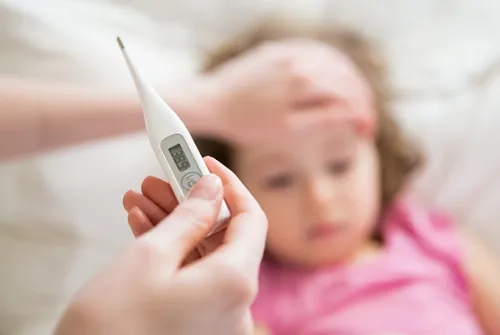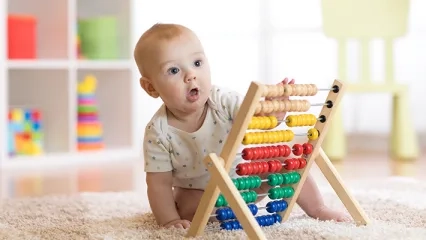Alo Yeditepe
Alo Yeditepe
High Fever in Children Article Series IV
How to Intervene in Febrile Seizures in Children?
Febrile seizures usually occur between the ages of 6 months and 6 years. Trying to stop the seizure and holding the child's feet during the seizure does more harm than good. All you have to do is to take the child to a safe place so that he does not fall, and to consult a doctor for seizures that last longer than 5 minutes... Yeditepe University Kozyatağı Hospital Pediatrics Specialist Dr. Perihan Çobanoğlu Saf talked about the points of curiosity about febrile seizures.
What Is a Febrile Seizure?
I can easily say that it is the subject that families fear most when it comes to fever. So much so that in every fever exceeding 38 degrees, parents are worried that their child will have a seizure. Of course, in reality this is not the case at all, not every high fever results in a seizure. Moreover, even if it does, a terrible picture does not emerge as one might think. A febrile seizure is a condition that can be seen in 1-5% of children aged 6 months to 6 years. It occurs during the rising phase of fever. It usually ends on its own within 1-5 minutes.
What Kinds of Symptoms Occur in Febrile Illness?
Symptoms such as contraction, bruising, passing out, and trembling are observed. The eyes move to one side, the jaw muscles contract, and the mouth is locked. Since swallowing functions are affected, salivation and drooling may occur. Urinary or fecal incontinence often accompanies this.
How Many Degrees Does the fever Reach in a Febrile Seizure?
Fever can be observed at any level above 38 degrees, and the temperature does not have to be too high. In fact, you may suddenly encounter a seizure before you realize that he/she has a fever, as is often observed during the first rise of fever. The first 1-2 days of febrile infections are the critical period for seizures.
What Causes a Febrile Seizure?
When the fever starts to rise, some hormones begin to be released in the body. These hormones are responsible for raising the fever to a high level, sometimes triggering the discharge mechanism in the brain, leading to seizures. Hormone release ends spontaneously when the fever stops, withdraws from the blood and the seizure ends.
Does a Febrile Seizure Cause Permanent Damage?
Febrile seizures and afebrile seizures take place by a completely different mechanisms. It is not predicted because the trigger of afebrile seizures is unknown. However, in a simple febrile seizure, we know what is going on at that moment, and we predict that the seizure will end, without causing any damage. But not every febrile seizure is that simple. If the febrile seizure lasts longer than 15 minutes, your child is younger than 6 months or older than 6 years, it is observed in only one part of the body, it has recurred within 24 hours, and there are other accompanying neurological findings, then it requires investigation.
Does the Frequency of Seizures Indicate a Different Disease?
In every febrile disease between the ages of 6 months and 6 years, a simple febrile seizure can be seen, especially in the first 48 hours, there is no problem here. However, it is useful to be careful in more than one febrile seizure in the same disease because these are stimulants in terms of brain infections such as meningitis and encephalitis.
How to Behave During a Seizure?
Try to stay calm even though I know it is impossible. Take your child to a safe place, never try to stop the seizure, or try to hold his or her feet. These attempts do more harm than good. Especially avoid applications such as splashing water on the child's face or putting the child underwater. These can cause more serious problems, such as water getting into the windpipe of an unconscious child.
This content was prepared by Yeditepe University Hospitals Medical Editorial Board.
Alo Yeditepe





